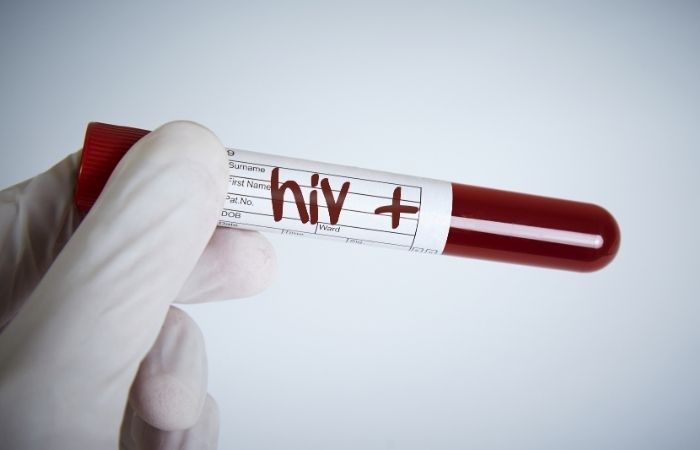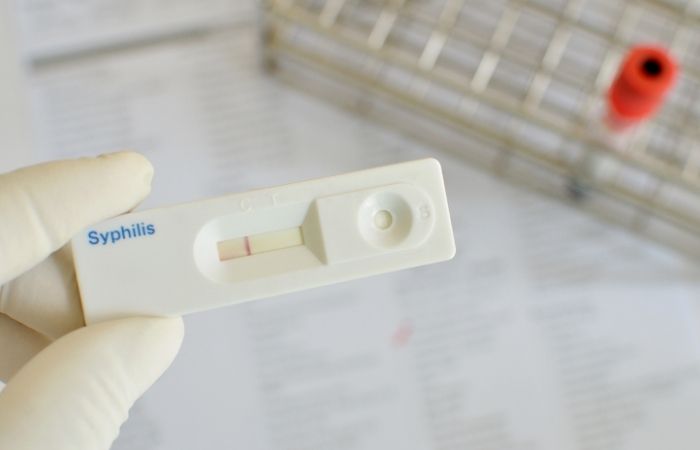How Regular STD Testing Can Prevent the Spread of Disease
The Big Picture: Timing Is Everything When It Comes to Home STD Testing
Timing is everything when it comes to sexually transmitted disease testing. The term "window period" refers to the time between exposure to an infection and when that infection becomes detectable through testing. Testing too early can yield a false negative because the virus has not reached detectable levels in the body yet.
Every STD has a window period. Here are some examples of such:
- Chlamydia: It is possible to detect chlamydia and gonorrhea as early as one to two weeks following exposure.
- HIV: Antibody testing can take up to three months to detect the virus, while a nucleic acid test can do it in as little as ten days.
- Syphilis: The incubation period for syphilis is typically three weeks.
You can avoid getting misleading results if you plan your testing schedule carefully once the differences outlined above are clear to you.

Why You Should Try Home STD Testing
There are numerous merits of testing at home:
- Privacy: You needn't go out of your house to collect specimens; you do not have to go to the clinic.
- Convenience: Very helpful for people living in remote areas or those with limited transportation.
- Quick Results: You will not have to wait that long for the results either, as most kits promise results in a matter of a few days.
Wide Ranging Options: We have options available for a wide range of sexually transmitted diseases, including HIV.
Check Your STD Status in Minutes
Test at Home with Remedium7-in-1 STD Test Kit

 For Men & Women
For Men & Women Results in Minutes
Results in Minutes No Lab Needed
No Lab Needed Private & Discreet
Private & DiscreetOrder Now $129.00 $343.00
For all 7 tests
Obstacles and Risks: Things to Remember
Home STD testing does have certain drawbacks though:
- Testing Too Early: If you test within the window period, you will run the risk of obtaining false negatives and becoming overconfident.
- Testing Incorrectly: Poor sample collection by accident on the part of the user or poor handling of the kit may lead to incorrect results.
- Need for Retesting:Some tests lack the diagnostical ability to detect early illness or have to make several visits to the doctor to establish a diagnosis.
These risks underline the need for timeliness, correct sample, and re-testing if symptoms persist or after the window period has expired.
Results and Recommendations
If you want your home tests for STDs to be as valid as possible, you can try the following steps:
- Do not test too early: Infections can be missed if tests are conducted too quickly. Consult specific STD guidelines if you are unsure.
- Follow the Steps: Careful sample collection and handling will ensure the validity of your test results .
- Retest if Needed: Retest at the right interval or consult a doctor if the symptoms persist after receiving a negative result.
- Confirm Success: Follow up with your doctor for further care, including any additional testing or treatment that you may need.

Information Facts and Figures from Statistics
Accurate testing is necessary, to know about the prevalence of STDs as well as at what time can the disease is detectable. Data sets with social importance are given below.
- Chlamydia is found to be the most common STD in the US. Approximately 1.5 million cases get diagnosed every year. Early diagnosis will help people avoid problems occurring later, which include infertility also.
- Studies have demonstrated that nucleic acid testing for HIV can identify infections as early as 10 days after exposure, and if treated promptly, the risk of transmission is considerably reduced.
- One recent review, for example, found that among younger persons in particular, testing rates were over 50% higher when conducted at home compared with more traditional clinical settings.
All this information leads to the conclusion that home testing is important to achieve better results in public health.
Opinion of Experts and Real-Life Examples
Because it is easy and private, the experts have given full support to at-home testing. However, these facilities need to be rightly used. According to a sexual health specialist, Dr. Jane Morris, at-home tests are an excellent way to keep people in control of their lives. However, interpreting data can only be rightly done if all the limitations are understood.
Case studies further demonstrate proof of its effectiveness. A health initiative on campus provided students with home test kits. As a result, testing for sexually transmitted diseases increased 30% and the early treatment of many cases of gonorrhea and chlamydia.
Order Now $119.00 $294.00 Check Your STD Status in Minutes
Test at Home with Remedium
6-in-1 STD Test Kit




For all 6 tests
Background Information: The Development of STD Testing
The whole concept of getting tested for sexually transmitted infections has changed a lot over the years. All it used to take was painful procedures and hours of waiting at the clinic. Today, there are non-invasive, super-accurate home testing available.
In 2012, the FDA approved the first HIV test that could be taken from the comfort of your own home and totally revolutionized how testing was available.
Where previously only swabs could detect urine samples, the facilitation of molecular biology has made it possible to use urine samples to detect gonorrhea and chlamydia, among other STDs.
The chronological progression indicates how testing has gradually become easier and more accessible than it ever was.
Home STD Testing: How It Will Be Different in the Future
At-home testing is getting better with time. New developments include:
- They aim to shorten this window period and hence have the diagnosis given early enough.
- The Comprehensive Panels: Nowadays, the multi-disease test kits which have a capacity for simultaneously detecting numerous different infections are the norm.
- Currently, several test kits integrate the use of a smartphone application where data is given instant interpretation as well as a guide on further action for users.
With these advancements, self-testing in the future is likely to be more reliable and easier to use.

Real-Life Application
Tips to get the most out of home testing for sexually transmitted infections:
- Regular Testing: It is essential to make testing a part of your health practice if you are sexually active or have multiple partners.
- Talk Openly: Encouraging open communication and mutual responsibility, partner testing is an excellent method of ensuring all parties are on the same page.
- Test Accurately: Testing for STDs after the window time has elapsed and then again after three months provides the most accurate results.
These practical steps help people take responsibility for their sexual health by staying informed.
Impact on Industry
There are several ways in which at-home testing of STDs has revolutionized the face of conventional medicine, including: Availability-There is better access wherein outlying locations or persons with poor accessibility to clinics can have more trustworthy testing alternatives. The anonymity in home testing also makes people more comfortable getting themselves tested, therefore encouraging them.
Time and money are saved: home tests save customers and healthcare systems from frequent clinic visits thus cost effective.
Consequently, health professionals embrace the new normal through telemedicine consultations and ensuring those who conduct tests from home receive follow-up care.
Common Myths
Home testing of STDs is greatly misjudged. Let me address a few of these myths:
- Myth #1: Home STD testing Can't Hold a Candle to a Professional Lab Test.
- The reality is that the efficacy rates of most FDA-cleared home test kits are on par with laboratory tests if taken appropriately and at the right time.
- Myth #2: One test is enough.
- The reality is that sexually active individuals need to test regularly, especially after having unprotected sex or having sex with new partners.
- Myth #3: Home kits are not user-friendly enough.
- Most of the kits have understandable instructions to be used by any person.
This could enhance confidence in home-testing options and dispel such myths.
Order Now $119.00 $294.00 Check Your STD Status in Minutes
Test at Home with Remedium
6-in-1 STD Rapid Test Kit




For all 6 tests
FAQs
1.- How accurate is home testing for STDs?
Most of the FDA-approved kits provide results as accurate as those of a clinic. This goes to show just how accurate home testing for STDs is, provided the instructions are correct.
2.- Can all STDs be tested with home testing kits?
Though most of the testing kits can test chlamydia, gonorrhea, HIV, and syphilis, some other diseases, such as herpes or HPV, may require a more specialized test.
3.- Can I take an at-home STD test immediately after exposure?
This depends on the infection. For example, chlamydia and gonorrhea are detectable within 1-2 weeks. However, most tests for HIV can take up to 3 months.
4.- If I test positive, what do I do?
Inform any sexual partners to prevent the continued spread of infection, see a healthcare provider to confirm, and discuss possible treatment options.
5.- What happens if I'm still having symptoms but my test came back negative?
Because early testing sometimes produces false negatives, it is advisable to retest after the window period or to see a health professional.
6.- Does it matter if I take an at-home STD test?
Yes, it does, provided you follow the directions to the letter and if you use an FDA-approved test kit.
7.- Where do I get the things I need to take an at-home STD test?
For any test, one always needs a swab, blood, or urine sample. Each kit will contain instructions to walk one through the test.
8.- Are home STD test kits effective to be used as regular tests?
Yes. Every sexually active person, even when asymptomatic, needs to be tested regularly.
9.- What's the cost of an STD home test?
Some tests range from $30 to $200, but this depends on the brand and the different STDs in the testing.
10.- Isn't the privacy of the home test important?
It is not needed to actually go to a clinic when at-home testing will send your results to your inbox.
Taking Responsibility for Your Sexual Health
All individuals who seek to use the home test on STDs have to be in the know of what a window period is, as well as when results start being viable. Take care of your health by not spreading disease; get the required tests and follow doctors' orders for further care when necessary.
Look into at-home testing kits approved by the FDA for STDs, speak to your doctor, and make testing a priority if you are ready to take responsibility for your sexual health. You would, in this regard, be well-informed and protected.
Sources
1.- Can I Take an STD Test at Home? - Planned Parenthood
2.- STI Testing at Home - NHS Inform
3.- How Long Does It Take for an STD to Show Up? - Healthline
4.- When Should I Test? - Brighton Sexual Health
5.- How Long Does It Take an STD to Show Up? - Medical News Today










